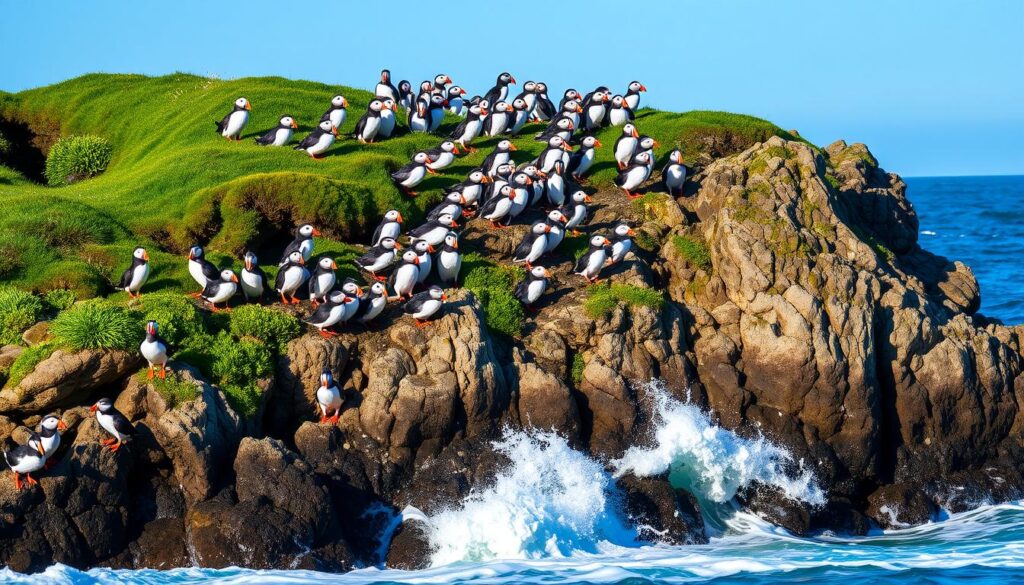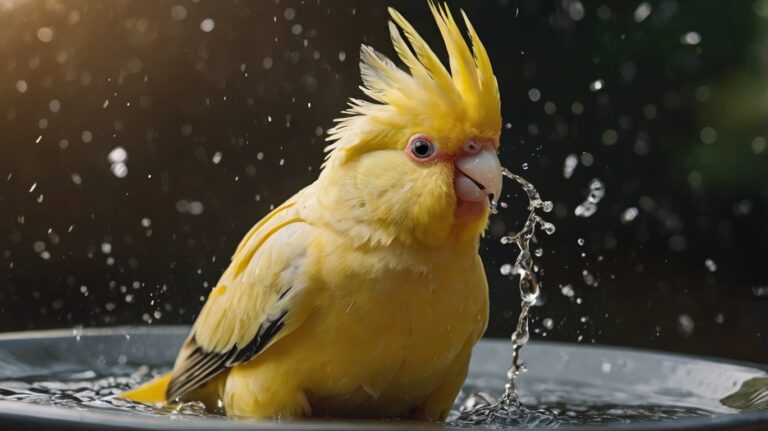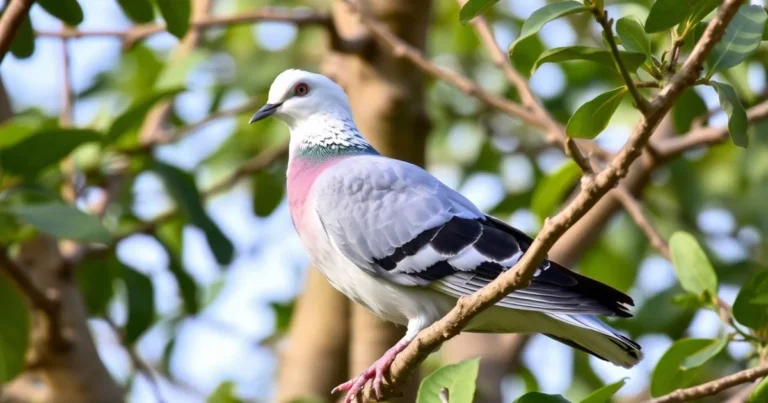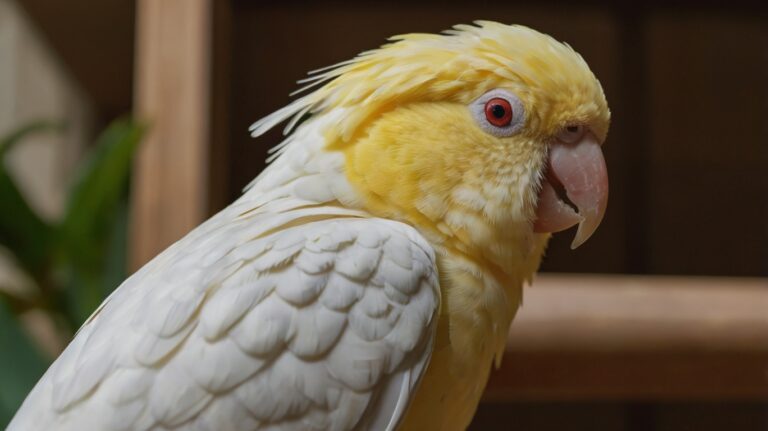Atlantic Puffin: Discover the Colorful Seabird
Imagine standing on the rugged cliffs of Iceland, watching colorful seabirds soar above the waves. These are the Atlantic Puffins, loved by many for their beauty and charm. Their unique beaks and striking colors make them icons of the North Atlantic.
Exploring the world of the Atlantic Puffin reveals a story of evolution and adaptation. These seabirds show us the beauty of marine ecosystems. We’ll learn about their amazing abilities, breeding rituals, and the efforts to save them.
Here’s a table summarizing the overview for the “Atlantic Puffin Bird”:
| Attribute | Details |
|---|---|
| Official Name | Fratercula arctica |
| Common Name | Atlantic Puffin |
| Pet Height | 10–12 inches (25–30 cm) |
| Pet Weight | 10–17 ounces (280–500 g) |
| Lifespan | 20–30 years |
| Smartness Level | High |
| Engagement in Play | Curious and exploratory |
| Human-Friendly | Moderate; enjoys observation |
| Animal-Friendly | Sociable with other puffins |
| Favorite Food | Small fish (e.g., herring, sand eels) |
Table of Contents
The Atlantic Puffin: A Unique Seabird
Description and Characteristics
The Atlantic puffin is a seabird with striking black and white feathers and a colorful beak. It belongs to the auk family and is very adaptable. These birds live in the North Atlantic Ocean and fly high above it.
They have strong wings and webbed feet. This lets them fly up to 55 miles per hour. They flap their wings 400 times a minute, a remarkable skill.
Habitat and Distribution
Atlantic puffins live in the North Atlantic, nesting on islands and coasts from North America to Scandinavia. Iceland hosts over 50% of the global puffin population. They spend most of their lives in the North Atlantic, using their special skills to survive.

Efforts are being made to save these seabirds. The Atlantic puffin is considered “Vulnerable” by the IUCN because of declining numbers. Projects like protecting breeding areas and reducing overfishing aim to help these birds thrive.
Appearance and Coloration
The Atlantic Puffin stands out with its black back, white belly, and colorful beak. The beak is orange and blue-gray, making it eye-catching. These colors help puffins attract mates in the breeding season.
The Distinctive Beak
The puffin’s beak is special. It has spines that help them carry fish. This beak is key for hunting in the sea.
Seasonal Color Changes
The puffin’s beak changes color with the seasons. It’s brighter in the breeding season and duller in winter. These changes help puffins communicate and find mates. Brighter beaks are more attractive.
The black and white feathers help puffins blend in. Their colorful beaks are for showing off and recognizing each other. Scientists watch these changes to understand puffin health and how they react to their environment.
The Atlantic Puffin’s colors play a big role in their lives. They help with breeding, survival, and social behavior in the sea.
Puffin Behaviors and Adaptations
The Atlantic Puffin is a remarkable seabird known for its exceptional aquatic and aerial abilities. These unique birds have adaptations that help them thrive in both water and sky.
Aquatic Prowess
Atlantic Puffins have wings that act as paddles, making them skilled swimmers and divers. They can reach 60 meters underwater while diving to catch small fish like sand eels and herring. During the breeding season, they eat up to 60 fish a day to feed their chicks.
Aerial Agility
In the air, Atlantic Puffins show remarkable aerial abilities. They flap their wings up to 400 times per minute, reaching speeds of up to 55 miles per hour. Though they can’t soar like other seabirds, their strong wing beats let them fly with great agility.
| Behavior/Adaptation | Statistic |
|---|---|
| Diving Depth | Up to 60 meters (197 feet) |
| Wingspan | 47-63 cm (18.5-24.8 inches) |
| Breeding Population | Estimated 12 million pairs |
| Flight Speed | Up to 55 mph (88.5 kph) |
| Fish Consumption per Day | Up to 60 during breeding season |
| Average Lifespan | About 20 years |
The Atlantic Puffin’s abilities in water and air show their remarkable evolutionary adaptations. These seabirds have mastered navigating their maritime environment with grace and efficiency.
Atlantic Puffin Breeding and Nesting
Every year, thousands of Atlantic Puffins come together in big breeding colonies by the North Atlantic coast. These colonies are safe havens, keeping birds away from predators like skuas and gulls. Puffins are known for their strong pair bonds, often staying together for life. They return to the same burrow every year to raise their young.
Burrow Construction and Chick-Rearing
Atlantic Puffins use their sharp beaks and strong claws to build deep burrows. These burrows are their homes, with special tunnels for bathroom use. Both parents work together to incubate the egg and care for the chick, called a “puffling.”

During this time, parents dive up to 12,400 times to find food for their chicks.
Studies have found that adult puffin size is linked to sea temperature. Smaller chicks grow into smaller adults. This change is due to the warming of the Gulf of Maine, where puffins eat less nutritious food as temperatures rise.
Despite these challenges, Atlantic Puffins keep coming back to their nests. By age seven, 96% of them return. Efforts to protect marine areas are key to saving these amazing seabirds and their homes.
Feeding Habits and Hunting Techniques
The Atlantic Puffin is a skilled hunter. It has special adaptations to catch and carry many small fish at once. They mainly eat sand eels and herring, diving up to 200 feet deep to find them.
They have strong beaks with a coarse tongue and spines. This helps them hold onto fish as they go back to their burrows to feed their chicks.
During breeding season, they live in colonies on cliffs or islands. They lay one egg and care for it for about 40 days. The success of their breeding depends on finding enough sand eels and herring.
But, changes in the ocean due to warming have made it harder for them to find food. This has led to fewer chicks being raised.
| Prey Species | Feeding Technique | Dive Depth |
|---|---|---|
| Sand eels | Diving and underwater pursuit | Up to 200 feet |
| Herring | Diving and underwater pursuit | Up to 200 feet |
Scientists use different ways to study what puffins eat. They use bill-load photography and fecal DNA metabarcoding. These methods help us understand their diet and how it changes over time.
As climate change and other human activities affect the ocean, knowing how puffins eat is key. It helps us protect them and keep the ocean’s balance.
Conservation Status and Threats
The Atlantic Puffin, a beloved seabird, faces many challenges today. They have a Vulnerable status according to the IUCN Red List. This means we must act quickly to save them..
Habitat Loss and Climate Change
Habitat loss is a big threat to Atlantic Puffins. Coastal development, human disturbance, and climate change are main causes. Rising ocean temperatures and fewer fish make it hard for them to survive.
In Maine, for example, puffins make up less than one percent of the world’s population. This is a worrying sign.
Restoration and Protection Efforts
Conservation efforts are key to saving Atlantic Puffins. Programs and policies aim to stop overfishing and protect marine ecosystems. In Iceland, where puffins nest in large numbers, hunting is done responsibly.
Despite the challenges, there’s hope for the Atlantic Puffin. With ongoing conservation, we can protect and even grow their numbers. By tackling habitat loss and climate change, we can ensure these birds thrive for generations to come.
Atlantic Puffin’s Significance in Culture
The Atlantic puffin is a beloved icon in the regions where it is found, especially in Iceland. These charming seabirds have won the hearts of many. They are often seen in art, literature, and tourism.
In Iceland, the puffin is a national symbol. It’s on souvenirs, postage stamps, and the country’s coat of arms. Icelandic artists love to paint and sculpt these birds. The puffin also boosts the island’s tourism, with visitors eager to see them.
The puffin’s cultural importance goes beyond Iceland. It’s also a key symbol in art and literature of Newfoundland and Labrador in Canada. Here, it represents the tough, maritime culture. It shows the resilience of coastal communities.
The Atlantic puffin will continue to enchant people for many years. Its cultural importance in the regions it calls home will last for generations.
Birdwatching and Wildlife Photography
The Atlantic Puffin is a favorite among birdwatchers and wildlife photographers. People from all over visit the North Atlantic, especially Iceland, to see these birds. The Westman Islands in Iceland have the largest puffin colony, with over a million birds every year.
Places like Maine, Newfoundland, and the UK are also great for seeing puffins. Watching their flight and how they meet their mates is amazing. It’s a great chance for anyone to see nature’s beauty up close.
Guided tours and eco-tours are great for seeing puffins. They let you see the birds in their home and help protect them. These tours also help local communities by supporting their economies.







